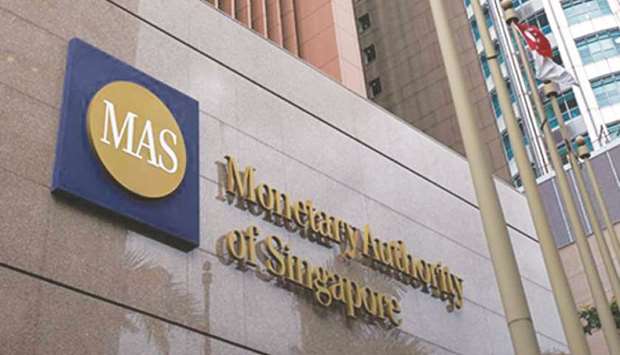Economic indicators are pointing to an improved growth outlook in the city state, while core inflation could approach 2% this year, the top of the MAS’s forecast range, Roland Mieth, an emerging-market fund manager at Pimco in Singapore, said in an interview.
The MAS - the only central bank in a major developed nation to use the exchange rate as its main tool rather than interest rates - could raise the slope of its trade-weighted band slightly, implying a tightening move, he said. The central bank has kept its policy unchanged since April 2016, when it shifted to a zero appreciation stance.
“It’s not the largest probability, but maybe there’s a 30% probability that Singapore hikes in their upcoming meeting in October,” said Mieth. “A little bit positive slope means a little bit tighter. Some probability they could hike is conducive to having a little bit of exposure to Singapore dollar.”
The central bank, which meets twice a year, said at its last meeting in April the neutral stance is appropriate for an “extended period of time.” Speculation is building among analysts, including from United Overseas Bank Ltd, HSBC Holdings Plc and Macquarie Bank Ltd, that the MAS may remove that language in its October statement to prepare the market for some tightening in the first half of 2018. The three banks expect the monetary authority to keep its policy unchanged at its upcoming meeting.
Singapore’s strong recovery will likely prompt the MAS to normalise policy and shift to a “slight appreciation bias” at the October meeting, Chua Hak Bin, a Singapore-based senior economist at Maybank Kim Eng Securities Pte, said in a note a week ago. There’s a 30% odds the MAS will do a token move to a 0.5% annualised appreciation of the currency’s trade-weighted band to send a signal of confidence in the domestic economy, analysts at Macquarie Bank led by Nizam Idris wrote in a report on Thursday.
The MAS guides the local dollar against a basket of its counterparts and adjusts the pace of its appreciation or depreciation by changing the slope, width and centre of a currency band. It doesn’t disclose details on the basket, or the band or the pace of appreciation or depreciation.
The Singapore currency’s trade-weighted index is approaching its highest level in a year. Industrial production in the trade-dependent city state expanded at a double-digit pace for the third month in August from a year ago, while non-oil domestic exports surged 17%, beating all estimates in a Bloomberg survey.
The Monetary Authority of Singapore, the only central bank in a major developed nation to use the exchange rate as its main tool rather than interest rates, could raise the slope of its trade-weighted band slightly, implying a tightening move, said a fund manager at Pimco.

